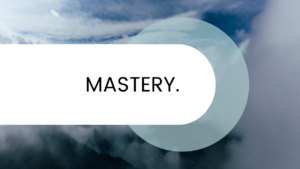Compensation in Change
Because compensation is often opaque and connected to roles and titles, the work of reinventing the System and shining a light on what’s really going on can provoke anxieties about this dimension. Those who benefit disproportionately from the status quo may be hesitant to be exposed, either out of guilt or for fear of corrective measures. Those at a disadvantage may not even know, but confronting the facts may make them feel undervalued or underappreciated. While not always possible, it can be helpful to provide some downside risk protection for everyone, such as “while we adopt pay transparency and new approaches to compensation, no one will cut your pay without your consent.
Questions on Compensation
The following questions can be applied to the organization as a whole or the teams within it. Use them to provoke a conversation about what is present and what is possible.
- What is our approach to compensation?
- What other benefits or services do we provide?
- What incentives, if any, do we offer?
- How do we define and ensure fair compensation?
- What mechanisms have we put in place to reduce bias in compensation?
- How are changes in compensation triggered and conducted?
- Do we offer profit sharing or equity compensation?
- How do our approaches to membership and compensation interact?
What does it mean to be People Positive about Compensation? Recognize that compensation is a hygiene factor that should be fair and generous enough to not matter. Keep the focus on autonomy, mastery, and purpose – conditions that actually support motivation. If you can, move to profit sharing (or a similar construct) to connect everyone to the overall success of the organization.
What does it mean to be Complexity Conscious about Compensation? Accept that no formula, leveling system, skills matrix, or series of job titles is going to sufficiently capture the complexity of a real workforce. Only transparency, dialogue, and judgment can make sense of what is fair, and even then, you’ll be grappling with inherent issues of bias and privilege that will not be easily eliminated. Compensation can’t be solved, it must be tuned.
Now that you are familiar with the dimensions of our theory, let’s discuss how we can apply it. Like many other tools, our approach can be used in different ways. It can be used descriptively to describe your own way of working or that of another team. It can be used diagnostically to analyse positive or negative patterns we have observed (e.g. why do new employees feel confused by the onboarding process?). In addition, some teams use our approach to envision how the organisation could evolve.
We use it primarily as an awareness-raising tool to capture stories, tensions and experiments that are happening in the real world. We ask the teams themselves to interpret what is happening. Regardless of the approach, our approach usually triggers a rethink in the teams as they begin to systemically rethink the way they work. A meeting is no longer just a meeting; it becomes a forum for belonging, an opportunity to share information, a chance for buy-in or even a potential waste of time. Our approach encourages such conversations, and these conversations will ultimately lead to change.
Every decision is associated with emotions. When you are faced with a decision, the subcortical structures in your brain are activated and trigger a cascade of emotions, instincts and bodily sensations. These elements influence a somatic decision or even bring it about before you are aware of it. This phenomenon is commonly referred to as a “gut feeling”. The interplay between our different thought systems happens so quickly and seamlessly that we often don’t even realise it. We may hold on to the belief that most of our decisions are made objectively and rationally, but this is not the case.
Therefore, at this point, you should have already made your decision. Somewhere in your mind or body, you know it. Either you believe that we need to change the way we work and are ready to take that step, or you don’t believe it and never will. Those who believe – the catalysts, the visionaries, the risk-takers – have understood that the future will not be a desirable place unless we change how we work together as humans to design and build the future in a way that employees will love coming to work.
So where do we go from here? The answer is simple; the implementation is a challenge. If you have some responsibility over others – in business, philanthropy, education, public service, your community or even at home – it’s your job to improve the humanity, vitality and adaptability of the current organisational system. If you are ready to do so, we can embark on this journey together.
You might also be interested in
AUTHORITY IN CHANGE
How we share power and make decisions; the right to...
MEMBERSHIP IN CHANGE
How we define & cultivate relationships; the boundaries & conditions...
STRATEGY IN CHANGE
How we plan & prioritize; the process of identifying critical...
MEETINGS IN CHANGE
How we convene and coordinate; the many ways members and...
MASTERY IN CHANGE
How we grow and mature; the journey of self-discovery; our...
WORKFLOW IN CHANGE
How we divide and do the work; the path and...






